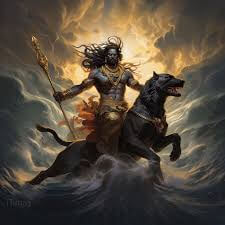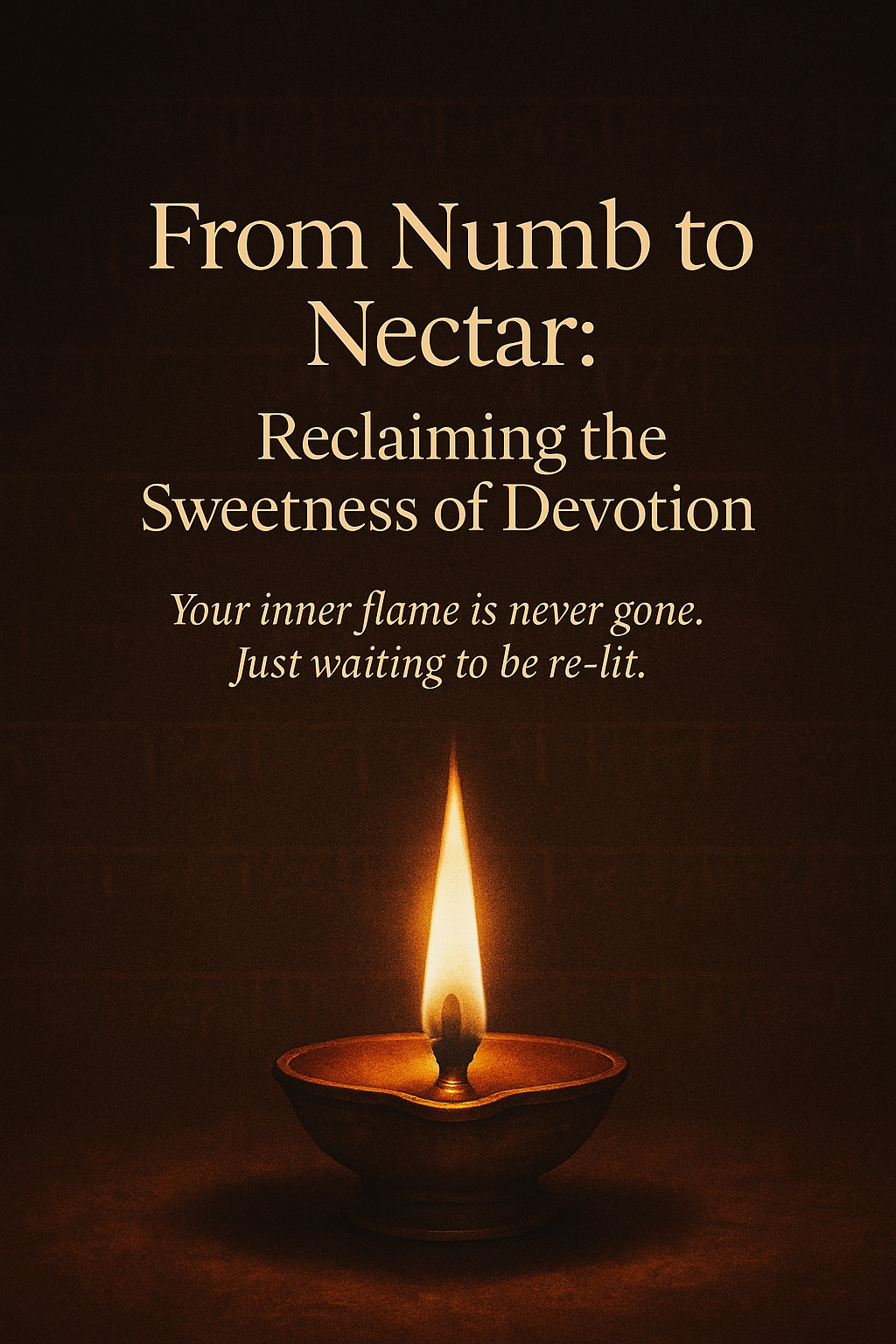Achala Saptami, also known as Saur Saptami or Magha Saptami, is a revered Hindu festival dedicated to worshipping Lord Surya, the Sun God, observed on the seventh day of the Shukla Paksha in the month of Magha. Celebrated for its spiritual significance, Achala Saptami symbolizes the Sun's eternal energy and life-giving radiance, offering devotees a chance for spiritual growth, health, and prosperity. The festival also marks the mythological event of Surya's chariot beginning its northward trajectory, heralding the transition to brighter days.
Rituals on Achala Saptami hold great importance, as practitioners engage in sacred bathing during sunrise, offer water (Arghya) to Surya, and often observe a fast of fruits and milk for purification. Devotees perform Surya Namaskar, recite hymns like Aditya Hridayam, and partake in charitable acts to embody the Sun's selfless light. These rituals aim to purify, empower, and align participants with the spiritual and life-affirming qualities embodied by the Sun God.
Mythologically, Achala Saptami celebrates Surya’s invigorated journey, represented by a chariot driven by seven horses, and involves acts of devotion that are believed to cleanse past sins and lead toward salvation. More than just religious observance, Achala Saptami imparts lessons of discipline, perseverance, and selflessness, urging followers to reflect the Sun’s unwavering attributes in their own lives. Through devotion and spiritual practice, Achala Saptami encourages the pursuit of righteousness and the cultivation of inner strength, guiding individuals toward a more enlightened existence.
Read more...Makara Sankranti marks the Sun's entry into Capricorn, heralding a period known as Uttarayana, which signifies spiritual significance, abundance, and light. This transition is celebrated across various cultures, symbolizing the journey from darkness to light—a time for growth, prosperity, and spiritual alignment. Occurring from January 13th/14th to February 12th, Makara Sankranti is seen as an opportunity for healing and inner reflection, encouraging individuals to set intentions and embrace transformation.
During Uttarayana, the Sun’s movement through Capricorn is categorized by its passage through three Nakshatras: Uttara Ashada, Shravana, and Dhanishta, each offering distinct opportunities for personal and spiritual growth. Uttara Ashada emphasizes perseverance and success, while Shravana focuses on introspection and listening, and Dhanishta highlights abundance and rhythm. Rituals associated with these Nakshatras, such as Surya Namaskar, meditation, and goal-setting, are designed to harness the energy of this auspicious period.
The Sun’s transition through Capricorn is more than an astronomical event; it’s a profound spiritual opportunity to embrace change and align with cosmic rhythms. Through intentional practices like gratitude, mantras, and connecting with nature, individuals can cultivate a life of abundance and harmony. As the Sun ascends northward, it calls for personal evolution, encouraging the release of the old and the embrace of the new, fostering a journey toward higher potential and grace.
Read more...Shani Amavasya, a spiritually potent day in Hindu tradition, occurs when a new moon aligns with Saturday, honoring Lord Shani, the deity associated with Saturn. This rare astrological event represents a unique opportunity for introspection, karmic cleansing, and spiritual growth, drawing believers and seekers eager to mitigate past karma and embrace new beginnings. The convergence of Saturn's disciplined influence and the introspective energy of the new moon encourages reflection and transformation.
The day's significance is multi-faceted, offering themes of karmic cleansing through rituals and prayers to Lord Shani, which are believed to alleviate the impacts of past actions. It also symbolizes an auspicious time for new beginnings, seizing the chance to release negativity and set fresh intentions. Furthermore, Shani Amavasya serves as a powerful moment for overcoming obstacles by understanding Saturn’s challenging lessons and fostering spiritual advancement through meditation and chanting practices.
Observing Shani Amavasya involves a series of rituals and charitable acts, including prayers, fasting, and oil offerings to honor Saturn's presence. These practices aim to invoke protection, reduce malefic effects, and align devotees with a pathway of discipline and inner growth. Astrologically, this day helps individuals undergoing tough Saturn cycles find relief and direction, reminding them that patience, perseverance, and commitment are keys to overcoming life's trials and paving the way for transformation and renewed purpose.
Read more...Kala Bhairava Jayanti, also known as Kala Bhairava Ashtami, is a sacred day dedicated to Lord Kala Bhairava, an intense and powerful manifestation of Lord Shiva. Observed on the Ashtami Tithi (eighth day) of the Krishna Paksha (waning phase of the moon) during the Hindu month of Margashirsha (November–December), this auspicious occasion holds profound spiritual significance for devotees seeking protection, liberation, and inner transformation.
Who is Kala Bhairava?
Kala Bhairava, an awe-inspiring deity in Hinduism, symbolizes the fierce form of Shiva, embodying the energies of time, destruction, and cosmic order. As the guardian of time, he ensures the balance of the universe while protecting devotees from negativity, fear, and adversities. His name "Kala" refers to time, and "Bhairava" translates to the fearsome protector.
Kala Bhairava is often depicted as a formidable figure adorned with serpents, skulls, and a trident, riding a black dog. Despite his fierce appearance, he is revered for his boundless compassion toward devotees who surrender to him.

Mythological Significance
According to Hindu mythology, the origin of Kala Bhairava is associated with the story of Brahma’s arrogance. Lord Shiva took the form of Kala Bhairava to humble Lord Brahma, who had become conceited about his role as the creator. In this fierce form, Shiva cut off one of Brahma’s five heads, symbolizing the destruction of ego and pride. This act established Kala Bhairava as the guardian of cosmic balance and the punisher of wrongdoers.
Significance of Kala Bhairava Jayanti
Kala Bhairava Jayanti is an opportunity for devotees to:
- Seek Protection: Worshiping Kala Bhairava is believed to shield devotees from accidents, diseases, and negative energies.
- Overcome Fear: Bhairava represents fearlessness, helping devotees transcend their fears and insecurities.
- Attain Liberation: Kala Bhairava's energy facilitates spiritual awakening and liberation (moksha) by removing the illusions of time and ego.
- Invoke Time Management: As the ruler of time, he blesses devotees with discipline, focus, and efficiency in their daily lives.
Rituals and Observances
On Kala Bhairava Jayanti, devotees perform various rituals to honor the deity and seek his blessings. Here are some key practices:
1. Fasting
- Many devotees observe a strict fast from sunrise to sunset, breaking it only after performing puja.
- This fast is a symbolic act of self-purification and dedication to Lord Bhairava.
2. Puja and Offerings
- Altar Setup: Devotees set up an altar with an idol or picture of Kala Bhairava, adorned with flowers, incense, and lamps.
- Offerings: Traditional offerings include black sesame seeds, mustard oil, and special sweets like kheer. Alcohol and non-vegetarian food are also offered in some traditions, as they are believed to appease Bhairava.
- Mantra Chanting: Devotees chant the Kala Bhairava Ashtakam or recite his mantras, such as:
"Om Hreem Vatukaya Aapaduddharanaya Kuru Kuru Bhairavaya Namah" - Special abhishekam (ritual bathing) with milk, honey, and water is performed on his idol or Shivalinga.
3. Visiting Temples
- Devotees visit Kala Bhairava temples, such as the famous Kala Bhairava Temple in Ujjain, to offer prayers and seek blessings.
- Feeding black dogs, considered sacred to Bhairava, is an important ritual, as they symbolize loyalty and protection.
4. Lighting Lamps
- Lighting diyas (oil lamps) with sesame oil is believed to dispel darkness and negativity, inviting divine energy into one’s home.
Astrological Importance
Kala Bhairava Jayanti has astrological significance as well. It is believed that worshiping Kala Bhairava on this day mitigates the malefic effects of Rahu and Shani (Saturn) in one’s horoscope. Devotees experiencing delays, obstacles, or misfortunes due to planetary influences can find relief by observing the rituals of this day.
Spiritual Lessons from Kala Bhairava Jayanti
- The Illusion of Time: Kala Bhairava teaches that time is both a creator and destroyer. By aligning with its flow, we can achieve harmony in life.
- Ego Dissolution: Just as Kala Bhairava humbled Brahma, he reminds us to let go of pride and embrace humility.
- Fearlessness: By surrendering to the divine, we can overcome fear and live with confidence and grace.
- Self-Discipline: The observance of this day instills discipline and focus, enhancing one’s spiritual and material pursuits.
Celebrations Across India
While Kala Bhairava Jayanti is widely celebrated in North India, particularly in Madhya Pradesh and Uttar Pradesh, it is equally significant in South India, where Bhairava is worshiped in Shaivite traditions. The day is marked by vibrant temple festivals, special pujas, and cultural programs honoring Lord Bhairava.
Kala Bhairava in Daily Life
Even beyond Jayanti, regular worship of Kala Bhairava can bring immense benefits. Devotees can:
- Chant his mantra every Tuesday or Saturday.
- Feed stray dogs as a form of seva (selfless service).
- Meditate on his fierce yet protective energy to cultivate inner strength.
Conclusion
Kala Bhairava Jayanti is not merely a day of rituals but a reminder of the divine forces that govern our existence. By honoring Kala Bhairava, we align ourselves with the cosmic rhythm, protect ourselves from negativity, and unlock the potential for spiritual growth and liberation.
On this auspicious day, let us invoke the blessings of Lord Kala Bhairava to guide us through the complexities of life, helping us conquer fear, transcend time, and embrace the eternal truth of the divine.
Om Kala Bhairavaya Namah!
The full moon on November 15, 2024, known as Karthik Purnima, marks a spiritually significant day in the Vedic month of Karthik. This full moon is also celebrated as Tripuri Purnima, Dev Diwali, and Tulsi Vrinda Jayanti.
Let’s dive into the mythology, rituals, and powerful practices associated with this auspicious day.
The Legend of Tripurantaka: Shiva’s Victory Over Tripurasura
In Hindu mythology, Karthik Purnima is celebrated as Tripuri Purnima to commemorate Lord Shiva’s defeat of the demon Tripurasura. Tripurasura was a formidable demon who, with his power, created three celestial cities known as Tripura in space and subjugated the gods and the entire world. His tyranny led the gods to seek help from Lord Shiva, who, in his form as Tripurantaka ("Killer of Tripurasura"), annihilated the demon with a single arrow, destroying the three cities in one swift stroke. Overjoyed by the victory, the gods declared Karthik Purnima as a festival of lights, thus giving it the name Dev Diwali, or "Diwali of the Gods."
The Significance of Matsya and Vrinda
Karthik Purnima is also celebrated as the birthday of Matsya, the fish avatar of Lord Vishnu. This avatar represents the first in a series of incarnations in which Vishnu appears in a form aligned with the world’s natural progression and serves as a protector during times of chaos.
Another significant celebration on this day is the birthday of Vrinda, the divine embodiment of the holy Tulsi plant. Vrinda’s devotion is honored in Hindu households, as the Tulsi plant is revered for its spiritual and healing properties.
Karthik Purnima and Kritikka Nakshatra: Rituals for an Auspicious Day
Karthik Purnima falls under the Kritikka Nakshatra, which is ruled by the Sun. This day is considered one of the most auspicious days of the year for honoring the Sun, cleansing oneself, and practicing spiritual rituals to channel divine energy and guidance.
Here are some key rituals to follow for Karthik Purnima:
1. Holy Bath with Sacred Mantra
Start the day with a holy bath by reciting this powerful mantra:
गङ्गे च यमुने चैव गोदावरि सरस्वति ।
नर्मदे सिन्धु कावेरि जलेऽस्मिन् संनिधिं कुरु ॥Gangge Ca Yamune Cai[a-E]va Godaavari Sarasvati |
Narmade Sindhu Kaaveri Jale-[A]smin Sannidhim Kuru ||
The mantra invokes the presence of India’s sacred rivers—Ganga, Yamuna, Godavari, Saraswati, Narmada, Sindhu, and Kaveri. By chanting it, we imbue our bath with the purifying energies of these rivers, connecting ourselves to the sacred waters and receiving their blessings.
2. Surya Arghya and Surya Namaskar
With Kritikka Nakshatra being ruled by the Sun, this day is ideal for expressing gratitude to Surya, the Sun God. Offer Arghya (water) to the Sun, pouring water from a copper vessel as you face east, allowing the sunlight to filter through the water. As you do so, feel the energy of the Sun as it illuminates your path, providing clarity and strength.
Following this, perform Surya Namaskar (Sun Salutations), the yogic sequence honoring the Sun’s life-giving energy. This practice not only boosts physical strength but also strengthens mental clarity and connection to divine energy.
3. Meditate on Kanda Sashti Kavacham
The day also honors Lord Kartikeya, the warrior son of Shiva and Parvati, who represents courage, focus, and strength. Reciting the Kanda Sashti Kavacham, a protective hymn for Lord Kartikeya, invites his energy of resilience and bravery into our lives. As you meditate on this hymn, visualize Kartikeya's strength and feel his divine protection surrounding you.
4. Listen to Aditya Hrudaya Stotram
The Aditya Hrudaya Stotram, a Vedic hymn dedicated to the Sun, is a powerful invocation for dispelling negativity and invoking inner courage. Listening to or chanting this Stotram channels divine energy into our lives, strengthening our focus, resilience, and joy. The Stotram’s vibrations also help align our intentions and actions with the Sun’s illuminating power.
A Day of Illumination and Celebration
Karthik Purnima is often marked by the lighting of lamps, mirroring the gods’ celebration of Shiva’s victory over darkness and chaos. On this night of Dev Diwali, homes and temples are illuminated, symbolizing the triumph of light over darkness, wisdom over ignorance, and dharma over adharma.
Conclusion
Karthik Purnima is a day filled with deep spiritual symbolism, transformative rituals, and an opportunity for devotion and celebration. It reminds us that divine intervention and devotion can bring about victory over challenges, inspire new beginnings, and light the way toward a fulfilled, harmonious life.
As you celebrate this sacred full moon, may the blessings of Lord Shiva, Lord Vishnu, the Sun God, and Tulsi Vrinda fill your heart with strength, joy, and peace.

